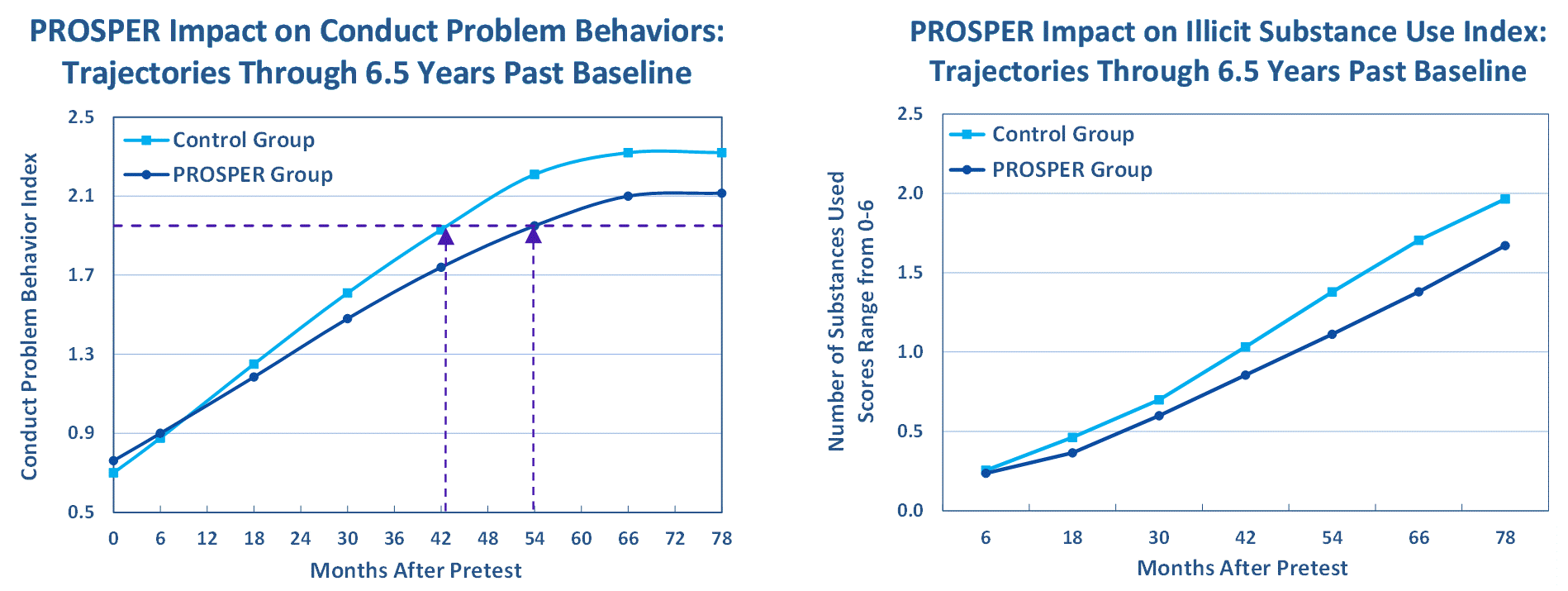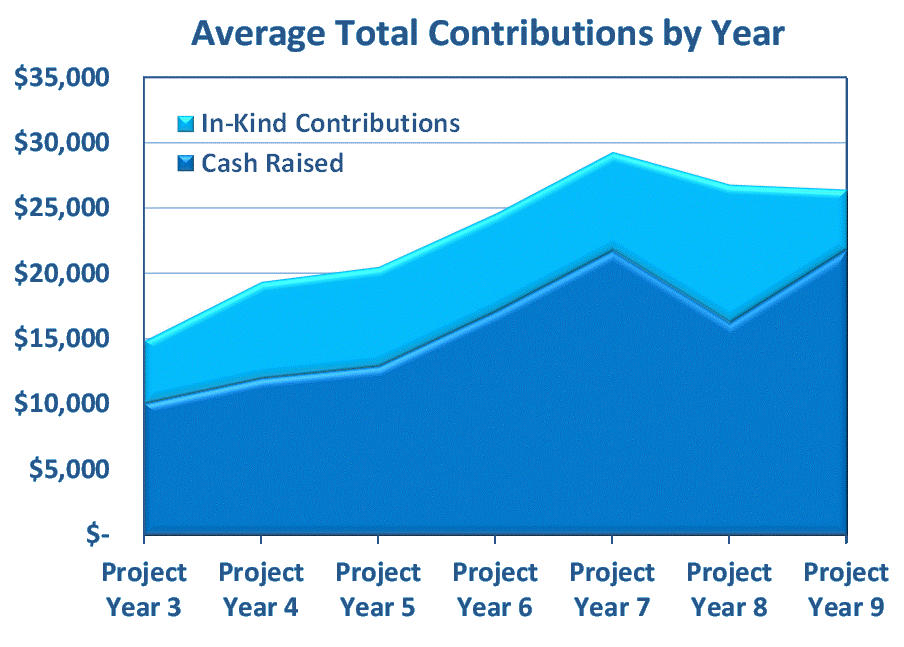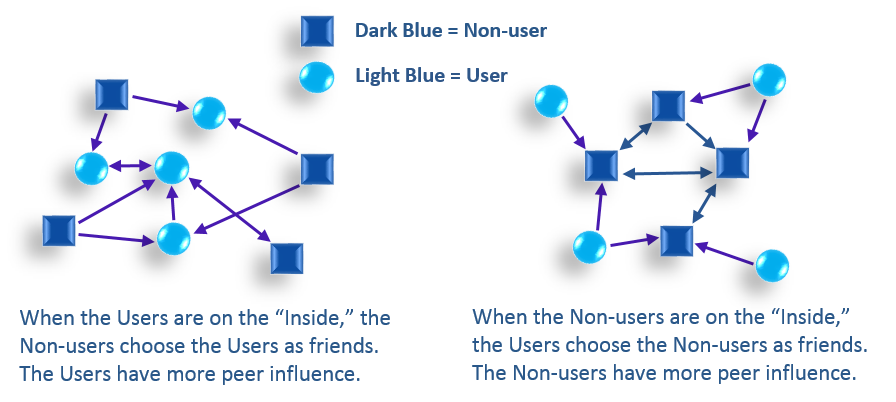PROSPER Works–Just as the programs on the PROSPER menu are evidence-based, the PROSPER Delivery System has been evaluated and shown to be an effective way to implement and sustain these programs.
The original randomized-controlled PROSPER evaluation study began in 2001, with approximately 11,000 participating youth and their parents from 28 communities in Iowa and Pennsylvania. The study, now in its third continuation period, continues as researchers at Iowa State and Pennsylvania State Universities collect data from these individuals who are now young adults. The goal of this long-term research is to learn how having PROSPER in their schools and communities in middle school has positively influenced them as they move into this next phase of their lives. To date, there have been close to 80 publications related to the PROSPER Delivery System. Highlights from these publications are outlined below.
Click here for the full list of publications.
Evidence for the PROSPER Delivery System (Download Research Overview)
Examples of Positive Outcomes and Long-Term Reductions in Risky Youth Behaviors
Youth participating in programs implemented through the PROSPER Delivery System scored significantly lower on a number of negative behavioral outcomes, including drunkenness, cigarette use, marijuana use, use of other illicit substances, and conduct problem behaviors, up to 6½ years past baseline; in many cases higher-risk youth benefited more.

Effective Community Teams, Cost-Efficient Program Delivery
- Community teams were effectively mobilized.
- Community teams achieved relatively high recruitment rates for program participation.
- PROSPER teams had a significantly more positive view of Cooperative Extension and of local school leadership.
- Community teams achieved high levels of implementation quality, with greater than 90% adherence for both the family and school programs, up to six consecutive years (see figure).

- The PROSPER Delivery System is cost-efficient and cost-effective (see figure).

Sustainability of Community Teams and Programs
- Most community teams have sustained their programming efforts for 11 years, after progressing through a series of developmental phases.
- Community teams have generated funding and resources to sustain both team operations and delivery of family- and school-based EBPs, averaging over $23,000 per team each year (see figure).

Other Positive Outcomes: Parents, Peers and Positive Gene by Environment Interactions
- PROSPER demonstrated positive effects on family strengthening, parenting, and youth skill outcomes that influence longer-term adolescent behavioral outcomes.
- Gene by environment interaction analyses show that PROSPER interacts with a genetic factor to reduce effects of negative parenting on aggression and to enhance the effects of positive parenting on underage drinking
- Peer social network analyses show PROSPER reduces negative peer influences, shifting peer influence toward non-users (see figure).

Evidence for the Programs on the PROSPER Menu
Earlier Study of Family Program on Menu Shows Outcomes Lasting into Young Adulthood
- Reduced exposures to substance use (protective shield effect).
- Reduced lifetime STD rates and substance use in young adults.
- Plus, multiple positive outcomes up through 12th grade, including better grades and economic benefits
- Reduced lifetime prescription drug misuse (see figure).

